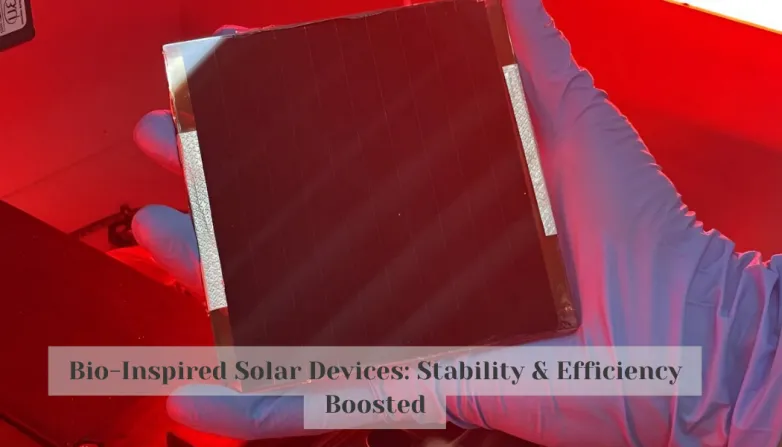Bio-Inspired Solar Devices: Stability & Efficiency Boosted
- Penn State scientists have found a cost-effective way to harness nature's wisdom to make more efficient, stable solar cells using perovskite material and synthesized biomolecules. Create larger devices without sacrificing efficiency or sunlight-to-electricity conversion.

Penn State scientists have developed a new cost-effective method for creating bio-inspired solar devices using perovskite solar cell material that could improve the performance of next-generation solar technology. The method combines perovskite material and a synthesized version of natural lipid biomolecules to help protect against moisture-induced degradation, forming a membrane-like layer around the perovskite which boosts stability and efficiency in tests. The process is cheaper and easier than traditional fabrication methods and results in a material with good electrical properties, allowing them to make large devices without sacrificing efficiency or how much sunlight the cells can convert to electricity. Additional work will involve creating larger solar devices and conducting a systematic investigation of other biomolecules. Nature still offers lots of inspiration to improving artificial material devices.
How Can Nature Improve Solar Devices?
- Improving the stability and efficiency of next-generation solar devices by creating a membrane-like layer around the perovskite which boosts protection against moisture-induced degradation.
- Using cheaper and simpler fabrication methods than traditional methods for creating solar devices that are large enough for practical use.
- Investigating other types of biomolecules and how they may be used to further improve the performance of solar devices.
- Exploring new ways to incorporate natural materials into solar devices in order to increase light absorption and efficiency.
- Designing materials that mimic the structural and optical properties of natural systems such as photosynthesis.
- Creating materials that absorb more light and convert it into usable electrical current at a higher rate than current technologies.
- Incorporating renewable natural resources into the production of solar cells in order to reduce the environmental impact of manufacturing.
Also read
- UbiQD Secures Landmark Quantum Dot Deal with First Solar
- Astronergy Invests $53M in Tandem Solar Cell Project
- ARENA Unveils $39M Solar Innovation Funding Round
- CNNP Optoelectronics brings utility-scale perovskite modules out of the lab
- Low-Temperature Sequential Deposition Lifts Inverted Perovskite Solar Cells Efficiency Record
